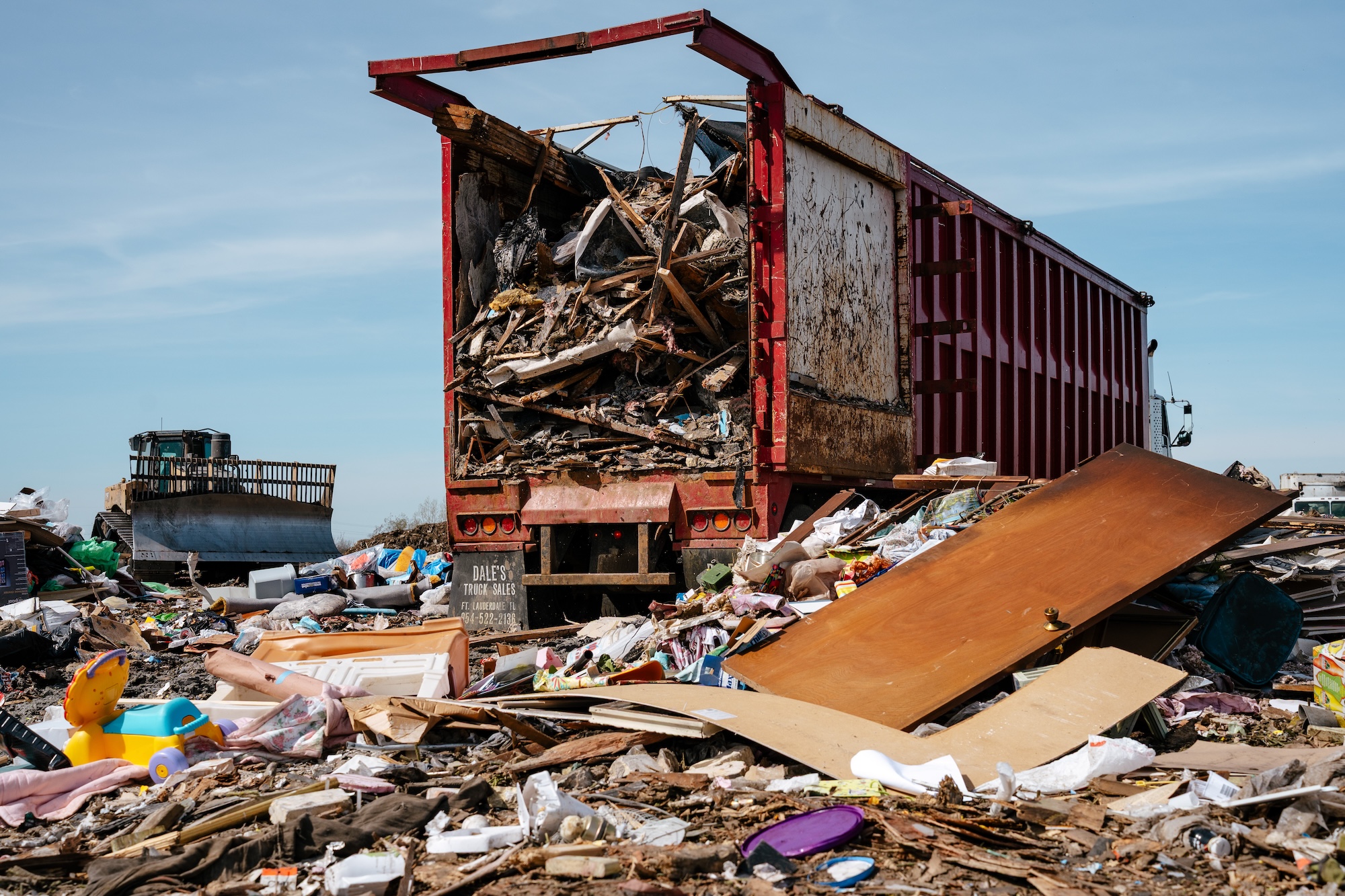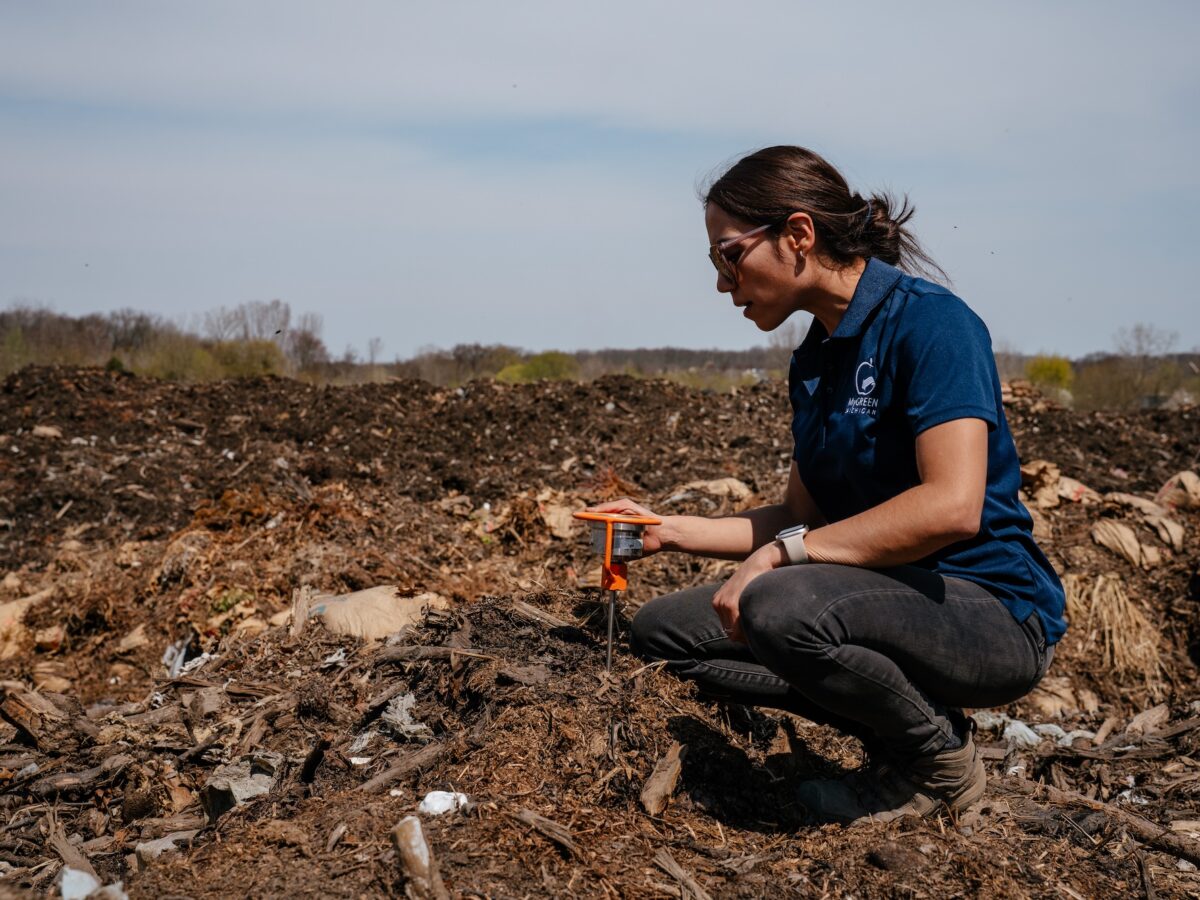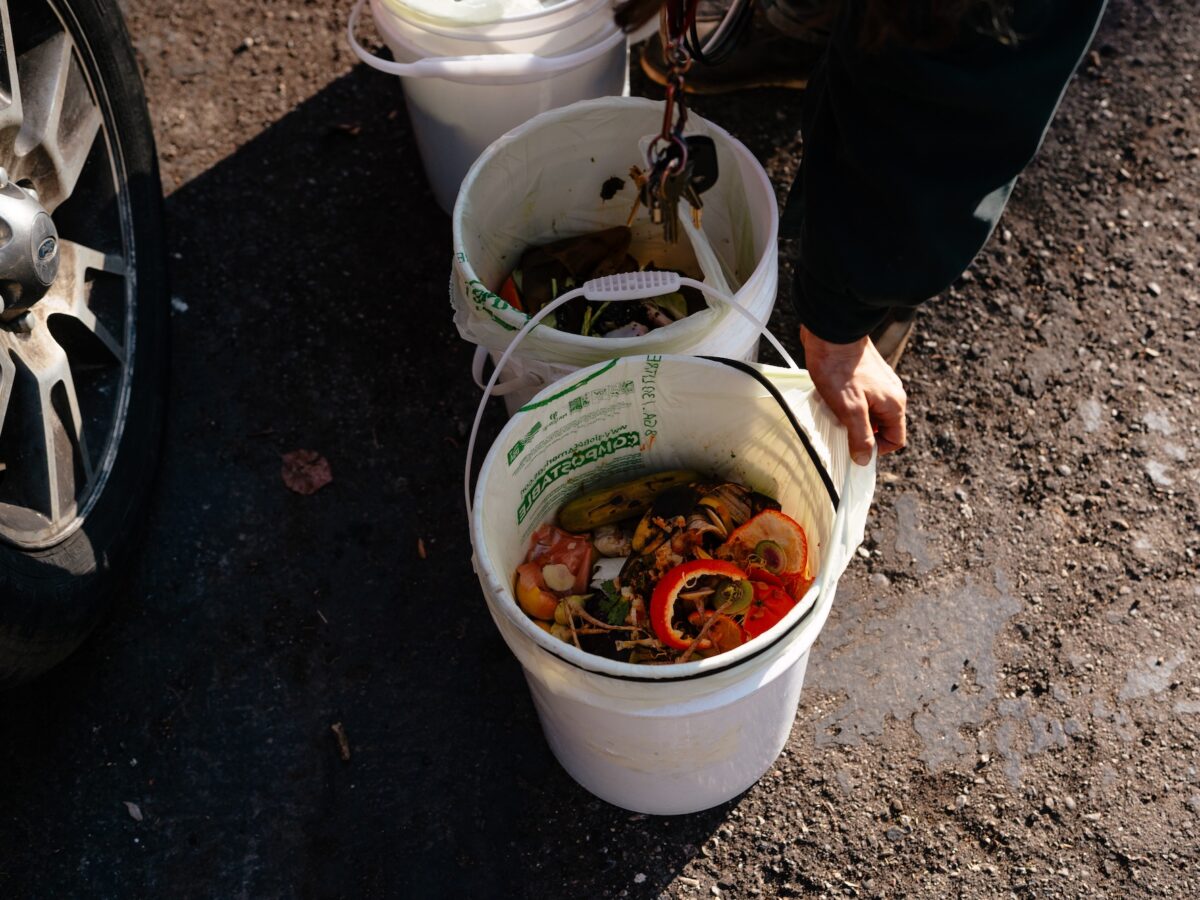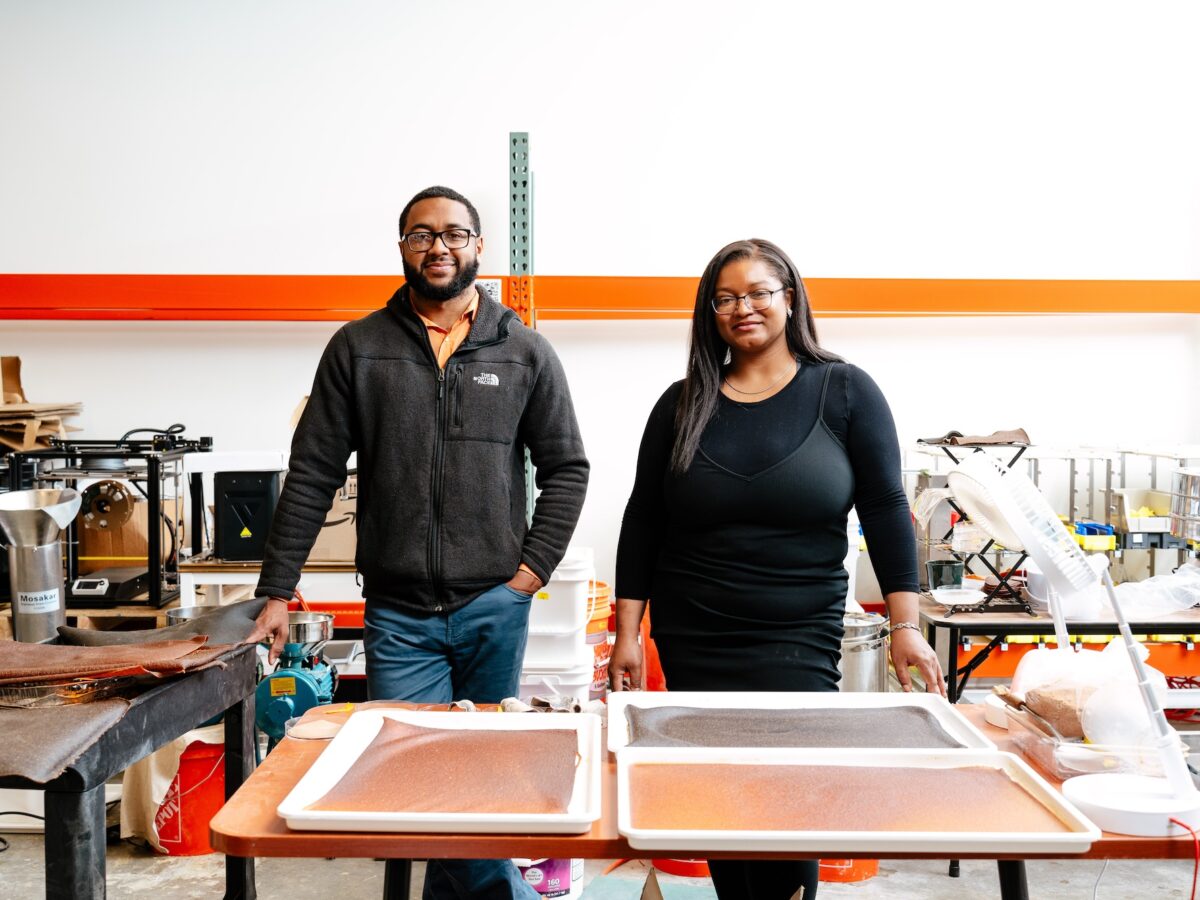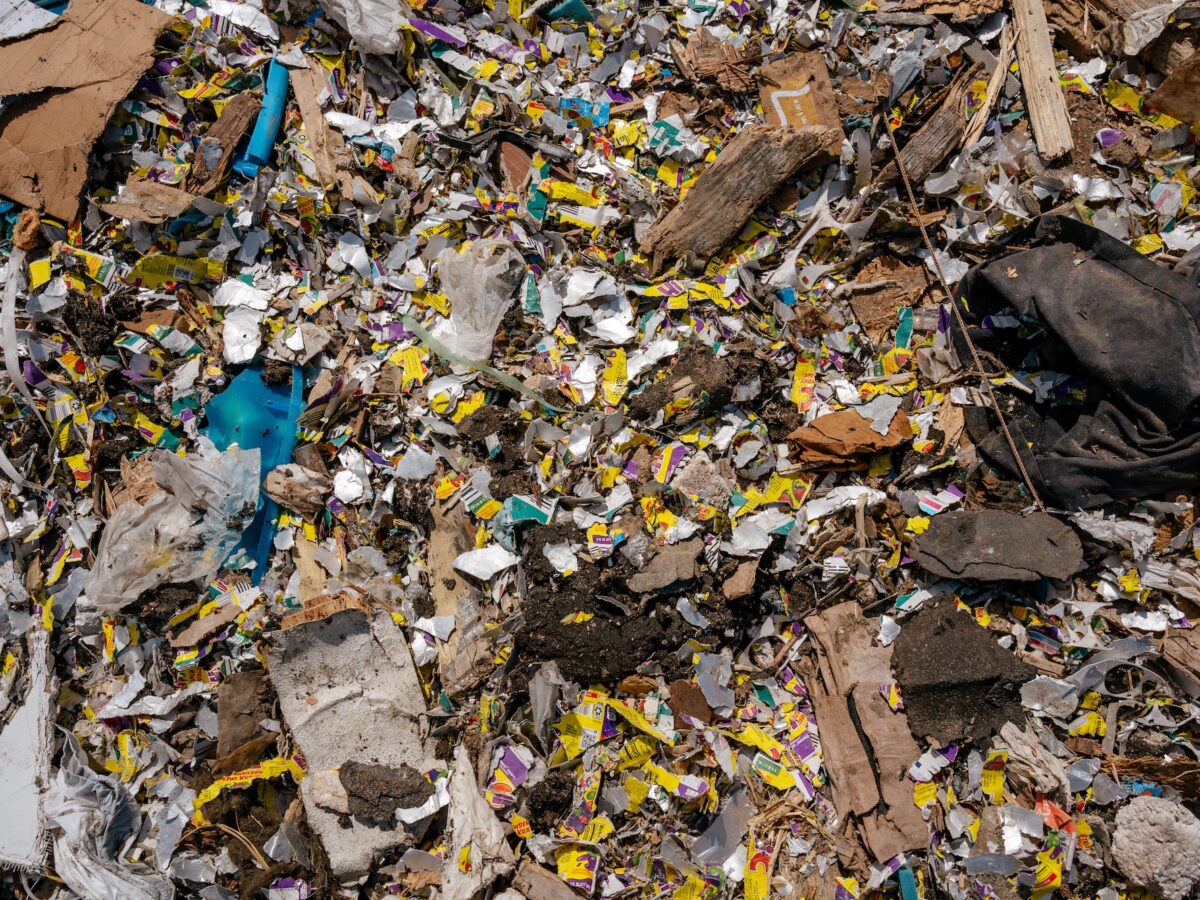Overview:
- In Kent County, Darwin Baas is spearheading a shift in waste management, aiming to transform how Michigan handles its waste.
- Under his leadership, the county captures methane from its landfill, operates the state's sole municipal waste-to-energy incinerator, and plans a Sustainable Business Park to divert organic waste and foster circular economy businesses.
- Yet, the majority of Kent County's 600,000 tons of waste still ends up in landfills, highlighting systemic barriers. Baas advocates for public-private partnerships to drive meaningful change in the state's waste management practices.
Darwin Baas surveys Kent County’s landfill from the cab of a county truck, watching the steady arrival of waste-hauling vehicles dumping drywall, sofas, home clean-outs, and bagged leftovers tumbling out by the ton. An average of 800 of these trucks arrive every day. The South Kent Landfill — just outside Grand Rapids — is now about 95% full.
“Everything up here is going to try to kill you,” he tells visitors, gesturing toward the trash compactors and bulldozers weaving between soft spots of shifting debris. But it’s not just the machinery that makes this place dangerous — it’s the system itself, designed to make waste disappear with maximum convenience and minimum cost.
Baas, director of Kent County’s Department of Public Works, has spent the last 11 years trying to bend that system in a new direction. Under his leadership, Kent County has voluntarily captured methane from its landfill, continued to operate Michigan’s only municipal waste-to-energy incinerator, and proposed an ambitious Sustainable Business Park to divert food and yard waste, recover recyclables, and incubate circular economy businesses.
But most of the county’s 600,000 tons of annual municipal solid waste still ends up here.
Kent County is among a minority of counties in Michigan managing waste through a publicly operated system. The vast majority of landfills statewide — 49 of 60 — are privately owned and profit-driven, further reinforcing the incentive to bury. Waste Management owns and operates dozens of landfills across Michigan. Baas sees this as a structural barrier to meaningful change.
“We need public-private partnerships,” he said. “The investments that need to be made are long-term — that’s not something the private sector is going to do on its own.”
The challenge Baas faces isn’t just operational — it’s systemic. As Michigan works to meet its climate goals, one of the most potent sources of greenhouse gas emissions is hiding in plain sight: landfills.
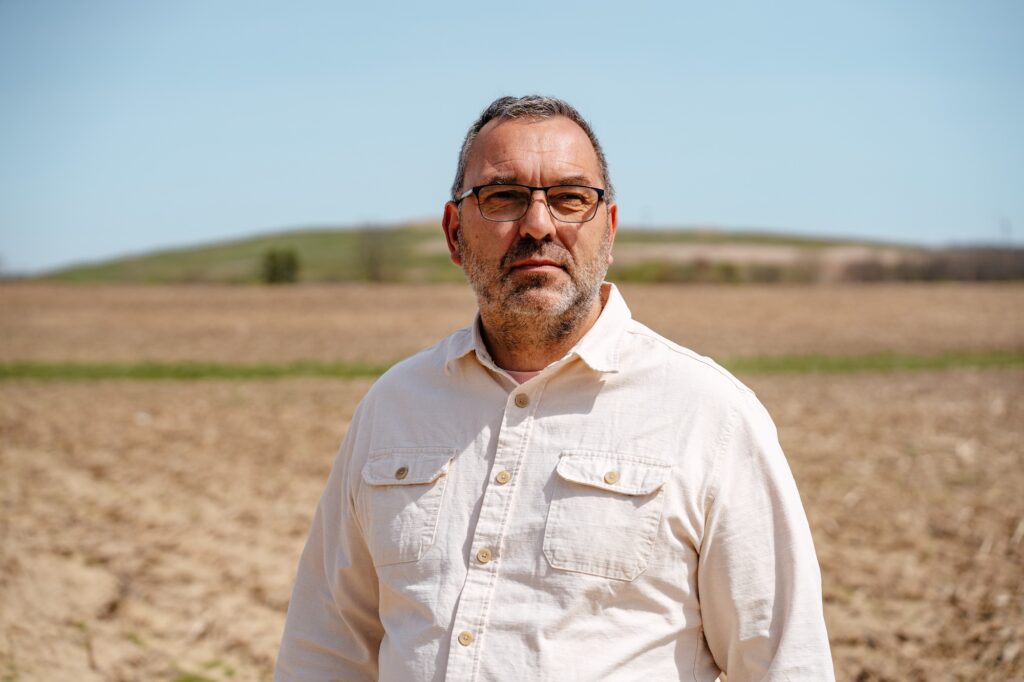
When food, yard waste, and other organic materials are buried, they decompose without oxygen and produce methane — a greenhouse gas that traps more than 80 times as much heat as carbon dioxide over a 20-year period. Though less visible than smokestacks or tailpipes, landfills are among the state’s largest sources of methane emissions, trailing only the fossil fuel sector.
Michigan recently overhauled its solid waste law, in part to address methane leaks. But even with new rules on the books, economic incentives still favor the cheapest option: burying waste.
Baas sees this as a core flaw in how Michigan manages its garbage — and a missed opportunity. In Kent County, he’s built an integrated system that prioritizes material recovery, energy generation, and composting over landfilling.
However, those systems are more expensive upfront and require initial and ongoing investment, which means aligning public infrastructure, private capital and long-term planning in ways Michigan’s current system doesn’t support.
At the heart of the issue is a tension between innovation and inertia — between new solutions and a regulatory and economic system still structured around cheap disposal. Michigan has the opportunity to lead on waste recovery, Baas argues, but doing so will require more than technical upgrades. It will demand a fundamental rethinking of how the state handles waste — and who bears the burden.
A new regulatory push
Michigan overhauled its solid waste law in 2022, in part to address methane leaks. The updated Part 115 requires all landfills — regardless of age or size — to self-monitor methane emissions and fix leaks through patching or installing gas collection systems if they exceed thresholds. New technologies, including satellite mapping and drones, offer more precise ways to detect emissions than traditional walkover surveys — but adoption remains slow.
Sniffer Robotics, an Ann Arbor-based company, developed the only EPA-approved drone for landfill methane detection. Its technology, already in use at Arbor Hills Landfill, can locate leaks faster and more accurately than older methods. Yet despite promising results, cost barriers and procurement hurdles have limited uptake across the state.
Michigan’s new rules also impose faster compliance timelines: sites must correct surface emissions within 90 days or begin designing a full gas collection system. Currently, Michigan landfills use a mix of active and passive gas systems — active systems vacuum methane to flares or energy generators. In contrast, passive systems may vent it directly into the air. Sites without active collection may eventually be forced to upgrade.
Tim Unseld, a solid waste engineer with the Department of Environment, Great Lakes, and Energy (EGLE), said two landfills without gas systems have already detected surface emissions and made repairs. But those fixes may not last. “Once enough landfill gas is generated, it will follow the path of least resistance to escape,” he said. Ongoing repairs can become costly — pushing operators toward installing full recovery systems, particularly if they can sell the captured methane as energy.
Environmental advocates argue the reforms don’t go far enough. “We’re the sixth-largest producer of landfill methane emissions, even though we’re only the 10th or 11th most populous state,” said Mike Garfield, executive director of the Ecology Center. “The basic reason is simple: We’ve made it too easy and too cheap to landfill waste.”
Garfield wants the state to adopt enforceable best practices across the board — including tighter flare controls, real-time monitoring, and mandatory adoption of tools like Sniffer’s — and points to the 2022 Arbor Hills consent judgment as a model.
Arbor Hills, owned by GFL Environmental, is the largest landfill in the state in terms of the amount of waste in place, according to EPA. It has faced years of complaints and violations tied to odor, gas migration, and leachate issues. So far, however, EGLE has not moved to apply those stricter terms statewide.
“The Part 115 amendments of 2023 include what EGLE considers best practices,” said agency spokesperson Josef Greenberg, adding that the state’s current focus is on implementation.
The economics of food waste disposal
Food waste is the largest single component of Michigan’s municipal waste stream by weight. Yet efforts to keep it out of landfills face a steep uphill climb — in large part because the system is built to reward the opposite.
Disposal fees are typically based on weight, creating a strong financial incentive for landfills owners to accept heavier materials like food waste. “This is really carbon-rich material — it generates methane, and they can use that methane to drive biogas-based processes,” Desirée Plata, an environmental engineer at MIT.
It’s a perverse incentive, she noted, especially as Michigan aims to reduce methane emissions. Instead of rewarding diversion, the current system reinforces disposal. “We’re paying for disposal by the ton, not by environmental outcome,” she said. According to EPA data, 35 out of 60 landfills in Michigan — nearly 60% — have landfill gas-to-energy projects.
That tension sits at the heart of Baas’s frustration. He’s spent years trying to reorient the local waste system around recovery. “I’ve been told I’m an oddity in the waste industry,” Baas said. “Most people don’t see the system this way.”

Waste recovery adds expense and faces adoption challenges, said Debora Johnston with Waste Management. “Capturing landfill gas generates revenue to help operators keep disposal costs down, helps protect our environment, and creates a renewable energy source for our local community,” she said.
“But separating out organics like food waste is expensive.” Indeed, the estimated cost for Kent County to meet the needs of a community of 640,000 to process 400,000 tons of mixed waste would exceed $400 million.
Plata said one of the most effective actions municipalities can take today is to fund composting. “Every municipality on the planet should be funding compost programs,” she said. “It’s one of the easiest things we can do to fight climate change — and it works.”
But Johnston points out the challenge of getting people to change their ways.
“Most communities are finding participation in recycling programs to have plateaued,” Johnston said. “And new organics collection and drop-off sites face many of the same challenges.”
That’s why Baas sees single-stream processing — separating out organics like food waste and recoverable items like recyclables and metals after pickup — as the path forward.
Despite setbacks, including the withdrawal of a private-sector partner, Kent County is moving forward with its Sustainable Business Park — a proposed 250-acre campus on county-owned farmland next to the nearly full South Kent Landfill.
The county has made a deliberate decision not to site a new landfill there and instead repurpose the land for recovery infrastructure that could process food and yard waste — which has been banned from landfills in Michigan since 1993.
“We’re past the point of building another landfill,” Baas said. “We’re trying to do something different.” Still, he acknowledges the economics won’t shift without public investment and new rules.
“We’ve determined that the highest, best use for these organics was mission critical,” he said. “But unless you change policy and infrastructure to make it go somewhere else, food waste will keep going to landfills — the lowest hanging fruit economically.”
This series, produced as part of the MIT Environmental Solutions Journalism Fellowship, investigates how Michigan’s food waste system contributes to climate change through landfill methane emissions—and explores the local solutions that could turn the tide. From farm to fridge to landfill, we examine how wasted food impacts our environment, economy, and communities, and highlight the people working to build a more sustainable, climate-friendly future. Published in partnership with Next City.
Compost or combust: Why wasted food is heating up the planet — and how Michigan can stop the rot
Data reporting and visualization contributed by Shelby Jouppi. Photography by Nick Hagen.

